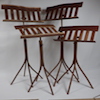Hello all, I just bought a fair sized shaper that came with a power feeder. I also bought all the bits the guy had with it.
My question is, how do you use a power feeder to cut say 3" tall moldings that look like they cut all of the wood away and leave no place to catch the out feed fence




 Reply With Quote
Reply With Quote


